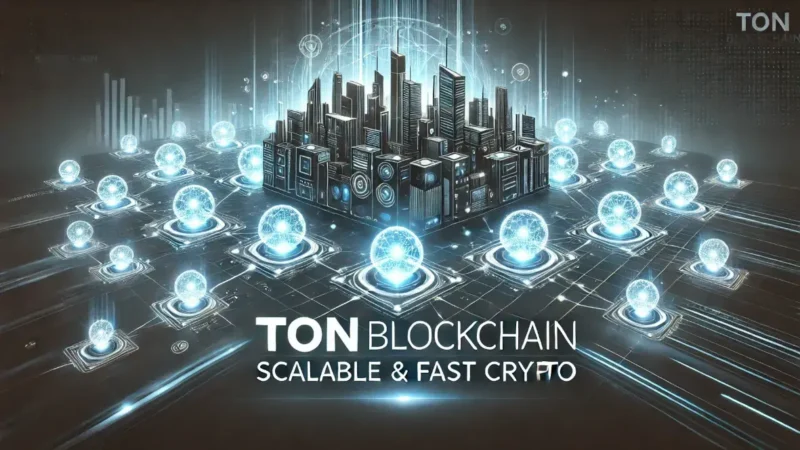What is an altcoin? The Lesser-Known Companions of Bitcoin

What is an altcoin?
Altcoins, a term derived from “alternative coins,” refer to all cryptocurrencies other than Bitcoin. These digital assets emerged following Bitcoin’s inception in 2009 and have since become an integral part of the cryptocurrency market. The significance of alternative coins cannot be understated, as they introduce unique features, functionalities, and use cases that differentiate them from Bitcoin, which is primarily recognized as a digital currency and store of value.
Initially, the crypto landscape was dominated by Bitcoin. However, the desire for innovation and diversification led developers to create various alternative cryptocurrencies, collectively known as altcoins. These digital currencies often aim to address perceived limitations within Bitcoin’s protocol or explore new technological advancements. For instance, some alternative coins, such as Ethereum, introduced smart contracts, enabling developers to build decentralized applications (dApps) on their platforms. This marked a turning point in the crypto world, allowing for a broader range of applications and utility beyond mere transactions.
The alternative coins market consists of thousands of different cryptocurrencies, each with its inherent characteristics and purposes. Some well-known examples include Litecoin, Ripple (XRP), and Cardano, among others. They serve different functions, such as facilitating faster transactions, enhancing privacy, or enabling decentralized finance (DeFi) operations. This diversity enriches the cryptocurrency ecosystem, providing investors and users a multitude of options for both investment and practical use.
In summary, understanding what is an altcoin involves recognizing its place within the broader cryptocurrency landscape, as well as appreciating the innovations and opportunities these digital assets can offer. The emergence of altcoins has sparked a wave of creativity and exploration, positioning these vehicles for growth and adoption in various sectors beyond finance.
The History of Altcoins
The advent of Bitcoin in 2009 marked the birth of the first cryptocurrency, setting a precedent for digital currencies. As Bitcoin gained popularity, it also inspired a myriad of alternative cryptocurrencies, commonly referred to as altcoins. The term “altcoin” encapsulates all cryptocurrencies that are not Bitcoin, reflecting the diverse ecosystem that has evolved since its inception.
In the early days following Bitcoin’s launch, several altcoins emerged, each attempting to improve upon Bitcoin’s foundational technology. Litecoin, created in 2011 by Charlie Lee, is often regarded as the first significant altcoin. It introduced faster transaction processing times and a different hashing algorithm, demonstrating how altcoins could differentiate themselves in the cryptocurrency market. Other early examples include Namecoin and Novacoin, which focused on enhancing aspects like decentralization and governance.
The proliferation of alternative coins truly gained momentum in 2013 with the rise of Ethereum, which introduced the concept of smart contracts. Unlike most cryptocurrencies that aimed merely to facilitate peer-to-peer transactions, Ethereum enabled developers to build decentralized applications (dApps) on its platform. This innovation sparked the growth of numerous other altcoins designed for specific use cases, including Ripple, which targetted banking and payment systems, and Dash, which prioritized anonymity and transaction speed.
As of 2023, the alternative coins landscape is populated by thousands of projects, each designed to address unique problems or niches within the blockchain ecosystem. From stablecoins like Tether and USD Coin to privacy-centric options such as Monero and Zcash, the variety of altcoins showcases the evolving nature of cryptocurrency. The fierce competition among altcoins has fostered innovation, pushing the boundaries of what is achievable within digital finance.
Types of Altcoins
In the ever-evolving cryptocurrency landscape, alternative coins have emerged as significant alternatives to Bitcoin, each serving distinct purposes within the digital economy. The various types of altcoins can be broadly categorized into several groups, including stablecoins, tokenized assets, security tokens, and forks of Bitcoin.
Stablecoins, as the name suggests, are designed to maintain a stable value relative to a fiat currency or a commodity, such as gold. They aim to reduce the volatility commonly associated with cryptocurrencies. A popular example is Tether (USDT), which is pegged to the US dollar. Stablecoins enable users to enjoy the benefits of cryptocurrency transactions without the unpredictability of market fluctuations.
Tokenized assets represent real-world assets on a blockchain, allowing for fractional ownership and easy transferability. For instance, RealT tokenizes real estate properties, providing a platform for investors to buy shares in properties through digital tokens. This integration of tangible assets into the digital space introduces liquidity and accessibility, transforming traditional investment approaches.
Security tokens are another class of altcoins distinguished by their compliance with regulatory frameworks. They represent ownership in an underlying asset, such as equity or debt, typically providing investors with dividends or interest payments. Companies like Polymath facilitate the creation of security tokens, offering a lawful avenue for raising capital while ensuring investor protection under existing regulations.
Finally, forks of Bitcoin, such as Bitcoin Cash (BCH) and Litecoin (LTC), emerge from modifications in Bitcoin’s protocol, leading to a divergence in development and intention. Each fork has its unique characteristics and goals, with Bitcoin Cash focusing on faster transaction speeds and lower fees. These types of alternative coins collectively contribute to the rich, diverse ecosystem that surrounds cryptocurrencies, presenting potential avenues for investment, utility, and innovation.
How Altcoins are Created
Creating an alternative coins entails several steps and considerations that developers must navigate carefully to ensure a successful launch. The fundamental methods for creating an altcoin include initial coin offerings (ICOs), token sales, and forks. Each of these approaches offers distinct advantages and challenges for the developers and investors involved.
An ICO is one of the most popular methods for launching a new cryptocurrency. In this model, developers present their project to potential investors, outlining the intended use of the altcoin and the benefits it aims to deliver. Investors then purchase tokens, often with established cryptocurrencies like Bitcoin or Ethereum, in exchange for the new altcoin that is created. This process allows developers to secure initial funding while granting investors early access to the digital asset.
Token sales operate similarly to ICOs but can differ in structure and regulation. Often, these sales may aim to raise funds without necessarily adhering to the ICO model’s guidelines. Developers might offer tokens through a defined contribution period, with limits placed on the number of tokens each investor can purchase to ensure broad distribution. This gives developers the opportunity to gauge interest and adjust their strategies accordingly.
Additionally, forks represent another method to create altcoins, occurring when developers alter the original blockchain’s protocol to create a new version. This can happen for various reasons, including improving certain functionalities or addressing security issues in the original cryptocurrency. The new alternative coin typically retains the underlying technology but operates independently of the original blockchain.
In conclusion, the process of creating an alternative coin involves multiple avenues, each ripe with their unique considerations. Developers must keep in mind regulatory compliance, investor interest, and technical specifications to successfully launch their altcoin into the market, thereby effectively navigating the complexities inherent in the cryptocurrency landscape.
The Role of Altcoins in Diversifying Portfolios
As the cryptocurrency market continues to evolve, investors are increasingly looking beyond Bitcoin to explore altcoins as viable alternatives. alternative coins, which refer to all cryptocurrencies other than Bitcoin, play a significant role in diversifying investment portfolios. By incorporating altcoins into their strategies, investors can achieve a more balanced exposure to the burgeoning cryptocurrency landscape, which includes a variety of projects with distinct use cases and varying levels of risk.
One of the primary advantages of investing in altcoins lies in their potential for higher returns. While Bitcoin is often viewed as the cornerstone of the cryptocurrency market, many altcoins represent innovative technologies or concepts that can lead to substantial price increases. For instance, several alternative coins focus on expanding the functionality of blockchain technology, catering to niches such as decentralized finance (DeFi) or non-fungible tokens (NFTs). By investing in these projects, investors can capitalize on market trends that may not directly influence Bitcoin prices. Furthermore, diversifying into altcoins can help mitigate the risk of relying solely on Bitcoin’s performance, as fluctuations in its price can heavily impact an investor’s portfolio.
However, investing in alternative coins is not without its risks. Many altcoins are characterized by significant volatility, which can lead to rapid price swings and potential losses. Additionally, the vast array of altcoins makes it essential for investors to conduct thorough research to discern which projects possess long-term potential and which may ultimately fail. As such, integrating alternative coins into a balanced cryptocurrency portfolio necessitates a careful approach, weighing the potential rewards against the associated risks.
In conclusion, alternative coins serve as valuable tools for diversifying investment portfolios, offering opportunities to tap into various market trends and technologies. By incorporating carefully selected alternative coins, investors can enhance their portfolios and position themselves for potential gains in the ever-changing cryptocurrency landscape.
Popular Altcoins and Their Use Cases
While Bitcoin is the most recognized cryptocurrency, a diverse range of alternative coins has emerged, each serving unique purposes and catering to specific use cases. Ethereum is arguably one of the most popular altcoins, known primarily for its capability to support smart contracts. This feature allows developers to create decentralized applications (dApps) that run on its blockchain, offering transparency and reducing reliance on intermediaries. The versatility of Ethereum has positioned it as the leading platform for initial coin offerings (ICOs) and decentralized finance (DeFi) projects, effectively addressing various needs in the digital economy.
Another noteworthy altcoin is Ripple, primarily designed for facilitating cross-border payments. Unlike traditional banking systems that may take several days to process international transactions, Ripple enables near-instantaneous money transfers at a fraction of the cost. By leveraging its unique consensus algorithm, Ripple aims to streamline financial transactions, effectively harnessing blockchain technology for a more efficient global payment system.
Chainlink also garners attention for its innovative use in connecting smart contracts with real-world data. This decentralized oracle network provides external data feeds to blockchain applications, allowing them to interact with information outside their native ecosystems. For example, Chainlink can supply price data to decentralized finance applications, helping to define collateral values or executing trades based on external market conditions. This functionality is crucial for enhancing the reliability and usefulness of smart contracts.
In essence, the alternative coin landscape consists of various cryptocurrencies, each tailored to specific functions and industry needs. From Ethereum’s innovative contracts to Ripple’s swift transactions and Chainlink’s data integrations, understanding what an altcoin can achieve enhances our appreciation of these digital assets’ roles in today’s financial systems.
The Risks of Investing in Altcoins
Investing in alternative coins, which are any cryptocurrencies other than Bitcoin, presents a unique set of risks that potential investors should consider. One of the most significant risks associated with altcoins is their inherent volatility. The alternative coin market is notoriously unstable, often experiencing drastic price fluctuations within short timeframes. Investors may witness substantial gains, but the possibility of severe losses is equally high. This market behavior can be attributed to a variety of factors, including low trading volumes and speculative trading patterns. Thus, individuals interested in what is an altcoin should be prepared for the potential emotional and financial strain that comes with such volatility.
Another critical risk factor involves regulatory challenges. Unlike Bitcoin, which has gained a certain level of acceptance and recognition, many altcoins face uncertain regulatory environments across different jurisdictions. Governments worldwide are formulating regulations on cryptocurrencies, and altcoins may not always qualify for favorable treatment. This unpredictability can have a direct impact on the value of altcoins. Sudden regulatory changes can lead to abrupt declines in value, further complicating the investment landscape.
Moreover, the propensity for scams and fraudulent projects in the altcoin sphere cannot be overlooked. The relatively low barrier of entry for creating a new cryptocurrency means that numerous altcoins have emerged, many of which lack a solid foundation or legitimate backing. Investors must be wary of Initial Coin Offerings (ICOs) that promise unrealistic returns, as these can often mask scams. Rigorous research is essential before committing funds to any altcoin. Thorough due diligence involves examining the project’s whitepaper, verifying team credentials, and ensuring that the community supports the altcoin. Ultimately, while investing in altcoins can yield profits, understanding the associated risks is crucial for making informed decisions.
The Future of alternative coins
As the cryptocurrency market evolves, the future of alternative coins, which include any digital currency that is not Bitcoin, appears promising yet complex. One of the significant trends gaining traction is the development of decentralized finance (DeFi) protocols. These platforms aim to recreate traditional financial systems such as lending, trading, and insurance using blockchain technology and are expected to drive the adoption of various altcoins. By utilizing smart contracts, many altcoins have already positioned themselves as key players in this burgeoning sector, providing unique functionalities that Bitcoin does not offer.
This focus on DeFi could lead to an increased demand for altcoins, especially as more users seek alternatives to traditional finance. Furthermore, the rise of non-fungible tokens (NFTs) has also broadened the altcoin landscape, with numerous projects dedicated to enhancing digital ownership and creativity. The growing interest in NFTs suggests that many altcoins geared towards art and entertainment may see enhanced utility and value.
Additionally, regulatory developments will play a crucial role in shaping the future of altcoins. As governments and regulatory bodies worldwide implement clearer guidelines for cryptocurrencies, investor confidence may increase, which could positively impact altcoin markets. Regulatory clarity may encourage innovation and investment in newer cryptocurrency projects, potentially leading to the emergence of additional altcoins that cater to unique market needs.
Market sentiment is another factor that cannot be overlooked. Public perception of altcoins can fluctuate significantly due to market cycles, media coverage, and key partnerships within the industry. The increased awareness of alternative cryptocurrencies may spur shifts in investor interest from Bitcoin to altcoins, with many traders diversifying their portfolios to capture potential gains. While the future of altcoins remains uncertain, these trends suggest an adaptive landscape characterized by ongoing innovation and investment opportunities.
Conclusion: Altcoins as a Critical Component of Cryptocurrency
In summary, alternative coins serve as a significant and varied extension of the cryptocurrency family, complementing Bitcoin by offering alternative use cases, technologies, and investment opportunities. While Bitcoin remains the dominant cryptocurrency, altcoins demonstrate the potential to innovate and address various challenges within the blockchain space. By providing unique features and functionalities, these digital currencies can cater to different user needs and preferences.
Throughout this discussion, we have explored how altcoins come in multiple forms, including those focused on privacy enhancements, smart contracts, and stablecoin functionalities. This diversity showcases the adaptability of cryptocurrencies beyond the foundational elements established by Bitcoin. For instance, tokens like Ethereum and Ripple have paved new paths in decentralized finance and global remittances, respectively. Understanding what is an altcoin opens up a broader perspective on the cryptocurrency market, highlighting the opportunities available beyond Bitcoin.
It is imperative for current and prospective investors to remain informed about the multitude of alternative coins available. With the landscape constantly evolving, features that were once considered innovative may quickly be surpassed by newer projects, suggesting that the potential for investment is fluid and dynamic. By keeping an eye on emerging altcoins, investors can identify promising opportunities that align with their portfolio goals and risk tolerance.
Stay informed, read the latest crypto news in real time!
Moreover, as regulatory frameworks and technological advancements continue to shape the cryptocurrency ecosystem, altcoins are expected to play an even more critical role in driving innovation and adoption. Engaging with the altcoin market not only offers financial incentives but also allows individuals to become part of a revolutionary movement that is redefining how value is exchanged globally.






